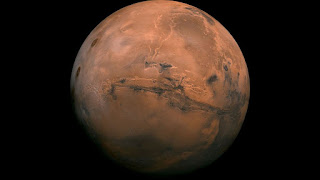In 1865, a 10-pound meteorite plummeted to Earth, landing in the remote village of Sherghati, India. After more than a century of research, the 1980s saw scientists finally uncover its origin: Mars. Since then, researchers have been striving to understand the type of Martian impact events that propel these fragments back to Earth.
Recently, a team from Caltech and the Jet Propulsion Laboratory (JPL) conducted experiments to simulate the impact pressure experienced by Martian rocks. They found that the pressure necessary to launch a rock from Mars into space is significantly lower than previously believed.
The connection between meteorites and their origins remained a mystery until the late 1970s when NASA's Viking orbiters analyzed Mars' atmospheric composition. Caltech's Ed Stolper was among the first to propose that shergottites came from Mars. This theory gained credibility when Martian atmospheric gases were found to match those encapsulated in the meteorites.
One key component of Martian rock is the crystalline mineral plagioclase, which transforms into glassy material called maskelynite under high pressure, such as during a violent impact. The presence of maskelynite in a rock indicates the type of pressure the sample experienced. In the past five years, Martian meteorites containing both plagioclase and maskelynite have been discovered, suggesting a pressure threshold they had been exposed to.
The Caltech team conducted shock recovery experiments to simulate Martian impacts more accurately. They used a powerful "gun" to blast rocks with projectiles traveling at five times the speed of sound. Previous experiments involved reverberating waves through a steel chamber, which inaccurately represented impact events on Mars.
The team's findings showed that the transformation of plagioclase into maskelynite occurs at an impact pressure of 20 gigapascals (GPa), a considerable difference from previous calculations. This new pressure threshold aligns with evidence from other high-pressure minerals in these meteorites, indicating that their impact pressures should be below 30 GPa.
It has been a major challenge to model an impact capable of delivering intact rocks from Mars at 30 GPa. In this context, the difference between 30 GPa and 20 GPa is significant. With these results, the more accurately we can characterise the impact pressures experienced by a meteorite, the more likely it is that we will be able to identify the impact crater on Mars from which it originated.


Post a Comment